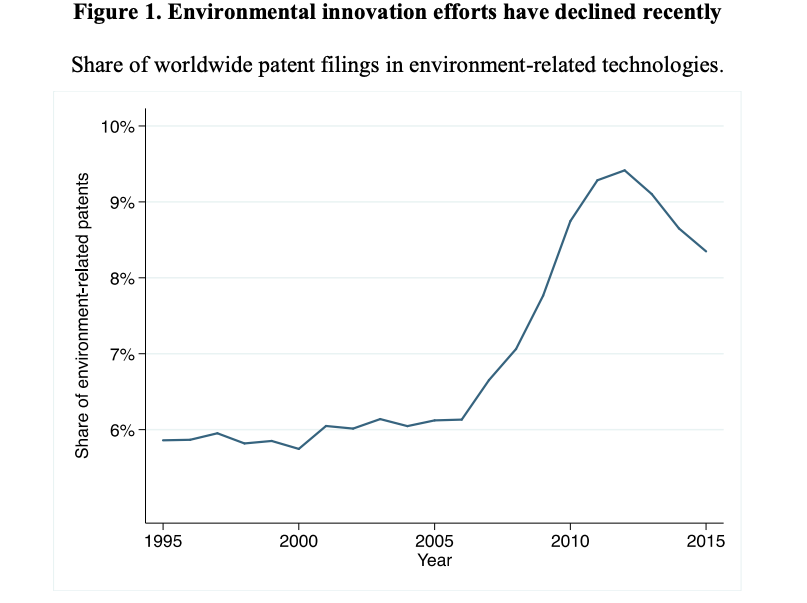Executive Hook: Ingenuity, Not Intent, Will Decide the Climate Winners
We’re not missing ambition. We’re missing affordable tools. Bill Gates’ message is blunt: “Our best weapon against climate change is ingenuity.” The companies that turn ingenuity into lower Green Premiums-the cost gap between clean and conventional options-will own the next decade of growth. Those that wait for perfect policy will watch market share migrate to rivals who can deliver cleaner, cheaper, and faster.
Industry Context: Climate Tech Is Now a Cost Curve, Not a Press Release
Across electricity, manufacturing, transportation, agriculture, and buildings, the economics are shifting. In power, renewables often have a negative Green Premium; in aviation fuel, cement, steel, fertilizers, and high-temperature heat, the premium remains steep. Meanwhile, customers, investors, and regulators are tightening expectations-Scope 3 transparency, supplier standards, and carbon border mechanisms are turning emissions into a line-item cost and a license-to-operate issue.

The competitive play is simple: redirect capital and ingenuity where premiums are highest and your advantages are strongest. Microsoft, Amazon Web Services (AWS), and leading startups show the pattern—digitize operations, aggregate demand through offtakes and PPAs, deploy targeted pilots, and scale what beats incumbents on cost and practicality.

Core Insight: Treat the Green Premium Like a P&L Gap You Can Close
Gates’ core idea is a CFO-friendly lens: the Green Premium quantifies where innovation matters most. You close it the way you’ve closed other structural cost gaps—through focused R&D, advantaged procurement, scale manufacturing, smart policy leverage, and relentless operational data. “Lowering the Green Premiums is the single most important thing we can do to avoid a climate disaster.” For business leaders, that translates into a portfolio approach: run discovery, pilot, and scale as concurrent tracks with clear stage gates tied to $/ton abated and unit economics.

Common Misconceptions That Stall Progress
- “Policy will fix it.” Policy amplifies winners; it rarely creates them. Assume volatility and design for subsidy-light competitiveness.
- “Offsets first.” Offsets are last-mile, not first-line. Prioritize direct abatement with verifiable impact; use removals for hard-to-abate residuals.
- “Scope 1 and 2 are enough.” In many sectors, 70%+ sits in Scope 3. If you can’t see your suppliers’ emissions, you can’t manage your own risk.
- “One silver bullet.” The transition is a portfolio of bets across heat, power, process changes, materials, and logistics—sequenced by economics.
- “We’ll scale later.” Scaling is the work. Design pilots for manufacturability, supply assurance, and bankability from day one.
- “Green is a cost center.” Done right, it’s margin protection and demand creation—preferred supplier status, lower energy volatility, and new products.
A Strategic Framework: A Phased, ROI-Driven Blueprint
Translate mission into mechanics. Here’s a pragmatic playbook we’ve seen work across industries.
Phase 0-6 Months: Diagnose and Prioritize
- Set targets you can defend: science-based, time-bound, with interim milestones. Commit to third-party assurance to avoid greenwashing.
- Map emissions across Scope 1-3 with high-granularity data. Stand up an enterprise emissions data layer that ties ERP, IoT, and supplier data to auditable calculations.
- Build an abatement cost curve. Rank initiatives by $/ton, strategic fit, technical readiness, and co-benefits (resilience, energy savings, regulatory risk).
- Adopt an internal carbon price and a green CapEx lane so projects compete fairly with like-for-like hurdle rates.
Phase 6-18 Months: Pilot With Stage Gates and Policy Leverage
- Design pilots to prove three things: technical viability in your context, path to unit-cost parity, and supply chain scalability.
- Focus where premiums are highest: sustainable aviation fuel offtakes for logistics-heavy firms; EAF/DRI and low-clinker cement for builders; heat pump and thermal storage retrofits for process heat; low-carbon fertilizers and methane reduction in agriculture.
- Lock demand and de-risk supply: long-term PPAs and virtual PPAs, advance market commitments, and supplier co-investments.
- Use hyperscale cloud and AI for real savings: carbon-aware scheduling, dynamic load shifting, and process optimization in plants and data centers (Microsoft, AWS, and others provide proven toolchains).
Phase 18–36 Months: Scale What Beats Incumbents
- Move from pilots to programs. Standardize designs, aggregate procurement, and contract for volume to drive learning curves.
- Stand up green product lines with transparent LCAs and verified claims. Price and position around reliability, speed, and compliance—not virtue alone.
- Institutionalize governance: a cross-functional Climate Investment Committee led by CFO/CTO with quarterly reviews on $/ton, IRR, and risk.
- Engage policy as a force multiplier: align with standards bodies, industry consortia, and pragmatic coalitions to unlock infrastructure and permitting.
Where to Play: Sector-Specific Moves With Measurable Payoff
- Electricity and data centers: Combine long-duration storage pilots with 24/7 carbon-free energy procurement and carbon-aware workload orchestration. Use real-time grid signals to cut both cost and emissions.
- Manufacturing: Electrify low- and medium-temperature heat now; pilot high-temp solutions (electrified kilns, green hydrogen) with clear abatement thresholds. Procure low-carbon steel and cement via offtakes to accelerate cost declines.
- Transportation and logistics: Electrify last-mile and depot-based fleets; explore hydrogen for heavy-duty corridors. Hedge SAF exposure with multi-year offtakes and co-investments that target cost parity over the contract life.
- Agriculture and food: Optimize nitrogen with data-driven application, adopt emerging low-emission fertilizers, and deploy feed additives and manure management to tackle methane.
- Buildings: Retrofit playbook—heat pumps, smart controls, insulation, and thermal storage—sequenced by building archetype and payback.
Governance and Measurement: Credibility or Bust
- Set science-based targets with interim checkpoints. Publish your methodology and get third-party assurance.
- Report consistently: energy intensity, $/ton abated, percentage of revenue from low-carbon products, supplier coverage, and 24/7 carbon-free energy progress.
- Align incentives: tie executive compensation to verified emissions outcomes and unit economics, not just activity metrics.
- Procurement muscle: bake carbon intensity into RFPs and supplier scorecards; provide data templates and technical assistance to small suppliers.
Risks and Trade-offs: Be Optimistic, Not Naive
- Techno-optimism vs. timelines: Some breakthroughs will slip. Build options—don’t over-concentrate on a single pathway.
- Short-termism: Quarterly optics can kill good projects. Use portfolio-level IRR and internal carbon pricing to keep the right bets alive.
- Legacy inertia: Change management is as important as chemistry. Train operators, update SOPs, and budget for integration work.
- Supply-chain blind spots: Data gaps and limited vendor capacity are real. Contract early, co-invest where strategic, and maintain alternates.
- Policy dependency: Model subsidy and permitting scenarios. Ensure projects can survive policy shifts or have exit ramps.
Action Steps: What to Do Monday Morning
- Launch a 12-week “Green Premium Sprint.” Build your abatement cost curve, identify top 10 initiatives by $/ton and strategic fit, and select 3 pilots with clear stage gates.
- Stand up an enterprise emissions data platform. Connect ERP, metering/IoT, and supplier data; appoint data stewards; choose a verification partner.
- Create a Climate Investment Committee co-led by CFO and CTO. Approve an internal carbon price and ringfence budget for pilots that clear predefined gates.
- Issue two market signals this quarter: a renewable PPA/V-PPA RFP and at least one offtake LOI (e.g., low-carbon materials or SAF) to help pull costs down.
- Update procurement playbooks to include carbon intensity and data requirements in all new RFPs. Offer onboarding support for Tier-2/3 suppliers.
- Publish a credible roadmap with interim milestones, audit plan, and risk scenarios. Commit to annual third-party assurance.
The takeaway for leaders: treat decarbonization like a core cost-transformation and growth program. Use ingenuity to compress the Green Premium, and scale what wins on both economics and practicality. Do that, and you won’t just meet targets—you’ll redefine your category.
Leave a Reply